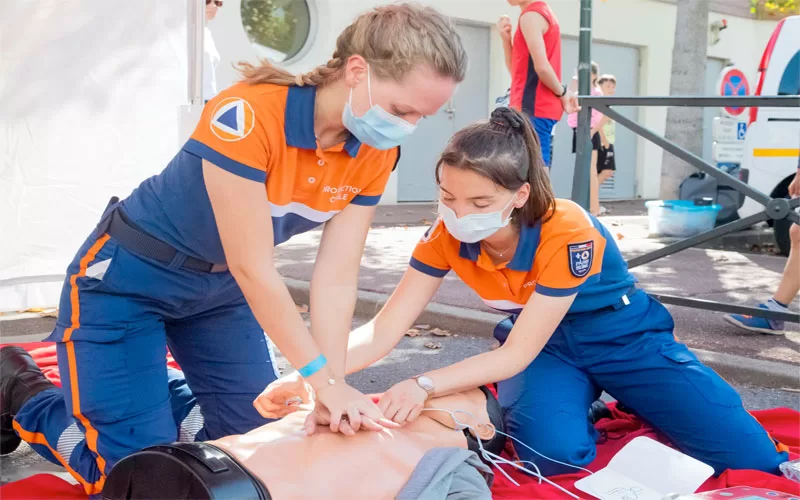
Unfortunate incidents can sometimes come unannounced, leaving us unprepared to handle them. From a stranger getting hit by a vehicle to a family member experiencing a seizure in the middle of the night, unforeseen circumstances can disrupt a calm moment with the unrest and anxiety they cause. However, while you may not desire incidents that threaten the precious lives of your friends, colleagues, loved ones, and even strangers, it’s necessary to familiarize yourself with life-saving skills for emergencies. Below are 7 skills everyone should have to save a precious life:
TCPR Skills
Telecommunicator Cardiopulmonary Resuscitation (TCPR), is the delivery of high-level cardiopulmonary resuscitation instruction by trained personnel. It’s delivered when a person suffers a heart attack outside the hospital.
During TCPR, the trained personnel, known as telecommunicators, coach the caller making a report of a cardiac situation incidence on how to deliver cardiopulmonary resuscitation. In most cases, the caller is a bystander or family member but not medical personnel. However, through TCPR, they help the patient resuscitate.
Indeed, the skill of administering TCPR, akin to CPR for healthcare providers, is life-saving.. When a person suffers a cardiac arrest outside the hospital, the telecommunicator gets the first opportunity to identify such patients and provide initial care. When telecommunicators are skilled, they can deliver CPR instructions effectively while also providing emergency medical services.
Heimlich Maneuver
This technique is used to expel suffocating foreign objects that get stuck in a person’s throat. To know if you’re to perform this technique on a person, observe their reaction to the situation. If the person is conscious and coughing, they may be able to expel the object eventually. Hence, they may not need the Heimlich maneuver. However, if the person is not coughing or unable to breathe and possibly signals for help by holding their throat, you need to perform this technique. But how do you do it?
For a non-pregnant person, you stand behind them and deliver five back blows using the heel of your hand. If that doesn’t get the object out of their throat, you proceed to place your fist between the bottom of their ribcage and navel. You then perform an abdominal thrust to push their abdominal region inward and outward five times. You repeat the process until the object is expelled and the person can breathe adequately. On the other hand, to administer this technique to a pregnant woman, your hands should be around the base of their breastbone and apply some thrust until the object is expelled.
Seizure Management Skill
Seizure is a common incident. So, you’ve probably experienced one. It occurs when the brain suddenly experiences an electrical disturbance. During this experience, a person can vomit and accidentally inhale their vomit into their windpipe. To manage seizures, you need to turn the victim on the side of their body and place a pillow under their head. Ensure that the person is lying free from sharp or hard objects. If they’re wearing eyeglasses, you need to take them off.
Furthermore, loosen any ties or materials around their neck. Avoid putting anything into the patient’s mouth, and don’t offer them water or food until they’re conscious. Also, remember not to administer CPR as it’s not necessary in this case. It’s advisable to stay with the person until the seizure stops. When they’re fully awake, you can find a safe place for them to sit. Comfort them with a calm voice to keep the mind and soul together.
Basic First Aid Skills
First aid is the first line of emergency care a sick or injured person gets before the arrival of a medical professional or before they’re taken to the hospital. With that being said, first aid can keep a patient alive until the right medical personnel arrives. Generally, there are several forms of aid a patient needs. These forms include emergency first aid, standard first aid, and child care first aid. With the right first aid skills, you can be anyone’s saving grace.
More so, giving adequate first aid reduces a patient’s recovery time. Additionally, it prevents them from suffering from a long-term disability due to delayed treatment. Basic first aid skills should comprise knowing how to handle a person who faints, spotting a concussion, treating a burn, setting a splint, and supporting a sprain. With these skills, you can increase the chances of a patient’s recovery and give them some level of comfort before they receive more professional care.
Wound Closure Skills
Wounds can range from minor bruises to deep cuts and injuries. Different methods can be used to close a wound. You can perform a simple suture or apply adhesive compounds to hold the torn surfaces of the wound together. Nevertheless, the primary goals of wound closure are to minimize or stop bleeding, avoid infection, and provide comfort for the patient. When an injury is not quickly and properly closed, it can cause a patient to lose excessive blood, become unconscious, and in critical cases, lose their life.
Final Thought
Unforeseen circumstances are a part of life. Arming yourself with essential life-saving skills empowers you to contribute to life-saving processes. Whether the victim is a stranger or a family member, life-saving skills allow you to sustain the health and well-being of precious lives.
Leave a Reply